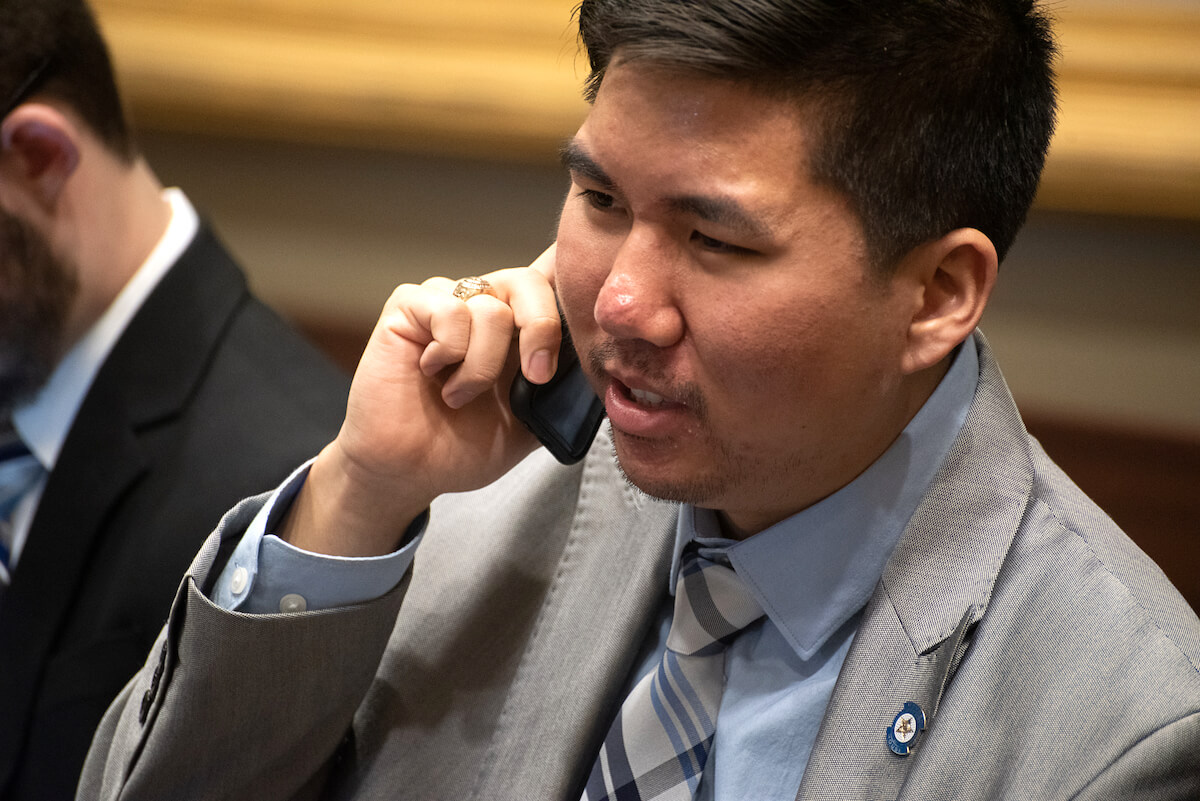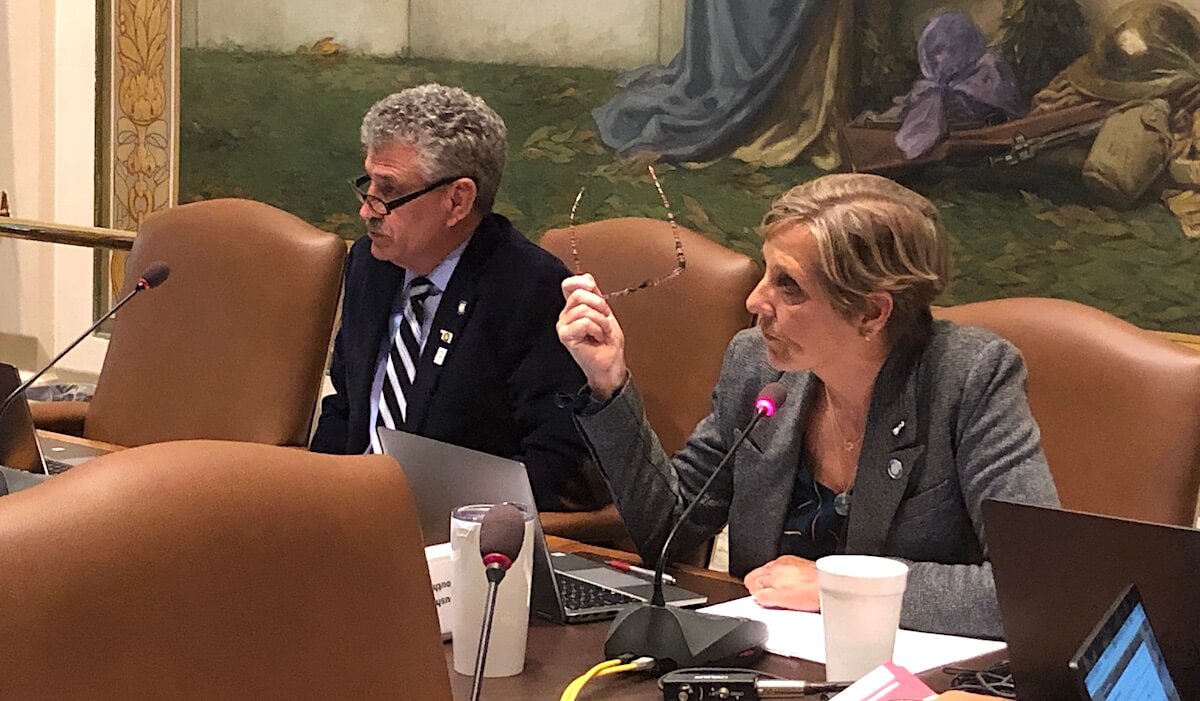

(Update: Just after noon Thursday, Feb. 13, the House Public Safety Committee voted 7-5 to advance the bill discussed in this story to authorize Oklahoma harm reduction programs.)
A bill with apparent bipartisan and bicameral support in the Oklahoma Legislature would establish rules for the legal operation of harm reduction services, commonly called “needle exchange” programs for habitual intravenous drug users.
HB 3028 by Rep. Carol Bush (R-Tulsa) would authorize state agencies, county health departments, churches, for-profit businesses and other organizations to operate harm reduction programs for the collection, disposal and replacement of used hypodermic needles. The bill would prohibit the use of state funding for the programs, which would be required to report statistics to the Oklahoma State Department of Health on a quarterly basis.
Private donations, grants and even federal dollars could be available to operate Oklahoma harm reduction programs.
“In the long run, hopefully it reduces drug use, reduces the spread of infectious disease, reduces law enforcement needle sticks — you know, when they frisk someone it’s a constant issue,” Bush said. “Obviously we will save money in the long run with prevention. Folks who get sick with these diseases, it costs a lot to treat.”
Bush’s proposal appears on today’s agenda for the House Public Safety Committee, which is set to meet at 10:30 a.m. in Room 412 of the Oklahoma State Capitol. Ultimately, she said, the bill will likely feature a handful of Republican and Democrat co-authors from both the House and Senate.
“The fact is that some of these programs have demonstrated significant utility and cost savings for the agencies and entities that implemented them,” said Sen. John Michael Montgomery (R-Lawton). “It offers a way to create a relationship. It offers a way for somebody to get that information on a regular basis and provides them some safe and smart alternatives to what they are doing.”
Montgomery also filed a similar measure this session after being approached by Rep. Daniel Pae (R-Lawton), whose seat Montgomery used to hold. Bush said Rep. John Waldron (D-Tulsa) has worked with her on the issue, and she said she learned Sen. Carri Hicks (D-OKC) filed a similar bill.
Currently, individuals who use illicit drugs intravenously often share needles, reuse needles or obtain used needles by other means. Such actions increase the risk of contracting or spreading diseases like hepatitis C or HIV. In August 2019, the OSDH published a “vulnerability assessment” about potential hepatitis C and HIV outbreaks, which put numbers to the issue:
Injection drug use is the primary mode of [hepatitis C virus] transmission with the majority (56.5 percent) of acute HCV cases in 2016 [reporting] a history of using needles for street drugs. Nationally, the overall incidence rate for 2016 was 1 case per 100,000 population, an increase from 2015 (0.8 cases per 100,000 population).
Jamie Dukes, public information manager for OSDH, highlighted a series of statistics in an email Wednesday:
- In 2018, approximately 10.2 percent of Oklahomans newly diagnosed with HIV had a risk transmission of only injection drug use;
- Approximately 55.6 percent of Oklahomans diagnosed with acute hepatitis C in 2018 had a reported risk of injection drug use;
- As of 2018, about 8.3 percent of Oklahomans living with HIV/AIDS had an identified risk of injection drug use.
- New users of syringe services programs are five times more likely to enter drug treatment and three times more likely to stop using drugs than those who don’t use the programs.
“It’s a major problem,” Bush said. “It’s not a party issue. It’s not even a rural or urban issue. It’s an Oklahoma issue that we are going to address.”
Ultimate goal: ‘Get individuals connected with services’

The pathway Hicks took to pursuing harm reduction program authorization this year was a bit circuitous. While researching how to lower the cost of hepatitis C treatment for people incarcerated with the Oklahoma Department of Corrections, Hicks looked at the $30,000-per-treatment price tag and ultimately realized preventing the transmission of hepatitis C and HIV could save money in the long run.
“You can’t truly stop the spread of this contagious disease if we’re not willing to prioritize clean needles,” Hicks said. “The ultimate goal would be to get individuals connected with services.”
Hicks emphasized the bipartisan nature of HB 3028 and offered a preemptive response to potential skeptics who might worry about needle exchange programs enabling drug use.
“The fact of the matter is it’s already occurring. Truly what we’re trying to mitigate is the spread of that contagious disease,” Hicks said. “Our law enforcement, one in five will be stuck with a needle during their time on the force. Our law enforcement are being asked to stand in harm’s way.”
Pae pointed out the same issues and said he had one particular constituent in Lawton who is particularly passionate about the idea.
“It became a bipartisan as well as bicameral piece of legislation that has a lot of momentum,” Pae said. “We have co-authors from Oklahoma City, Tulsa and Lawton, so it shows a strong, united line of support on this issue. In the other states that have established a harm reduction program, they have seen reduced drug use.”
Hicks said she and her colleagues particularly looked at Florida, where a three-year pilot project saw such positive results that lawmakers took the program statewide after one year.
“While stigma can be an emotional reaction to particular policy, I would just ask for patience and understanding with what we are trying to accomplish because the evidence is overwhelmingly clear that this is something we need to do for Oklahomans,” Hicks said.
Student enlightened lawmaker on harm reduction programs

Waldron, a freshman Democrat, said harm reduction programs reached his radar while he was teaching at Tulsa Community College about six years ago. A student named Andrea Haddox brought up the topic by discussing her past use of intravenous drugs.
“She was turning her life around,” Waldron said. “I was really impressed about how she brought her personal experiences into our discussions about government and politics.”
Waldron said Haddox began working with the group Stop Harm On Tulsa Streets, or SHOTS.
“She has saved a lot of lives in that community,” Waldron said. “She has been calling attention to this silent crisis in our streets. She really inspired me, and when I heard [Rep. Bush] was working on a harm reduction bill, I was happy to get involved.”
A former employee of the Oklahoma State Department of Health, Bush said the average Oklahoman might not realize the scope of people affected by intravenous drug use, which largely involves the use of opiates (like heroin) or methamphetamine.
“I think there is a stigma associated. ‘Oh, they’re drug addicts. They live under a bridge,'” Bush said. “That’s not necessarily what is happening. Addiction is a disease. I think with the last few years of really trying to get folks to understand that, I think that’s why this is very timely.”
Waldron agreed.
“We need to find a way to reach a population that is isolated and endangered and find ways to get them access to treatment and services,” he said. “We know an intravenous drug user who is addicted to a drug is not really going to right themselves until they are ready. But when they are ready, we want to have groups out there who are already working with them and supporting them.”
HB 3028 would also allow tribal governments to operate an Oklahoma harm reduction program. Brian Hail, deputy executive director of external operations for Cherokee Nation Health Services, said in a statement that the Cherokee Nation is watching the bill closely.
“Cherokee Nation Health Services has worked diligently and proactively to eliminate hepatitis C and HIV in our communities with great success,” Hail said. “The next step in preventing these diseases and protecting the achievements we’ve realized is implementation of harm reduction strategies that will help prevent infections.”
Waldron said the bill would authorize an alternative approach to criminal prosecution for addressing substance abuse and addiction. He called it “smart policy” embraced by pragmatic lawmakers on both sides of the aisle.
“A lot of the most partisan people don’t work in this building,” Waldron said. “When you do, you start to recognize the public service nature of the job. There are a lot of good people on both sides of the aisle who will talk to people and make good things happen.”
Oklahoma hepatitis C and HIV vulnerability assessment
 Loading...
Loading...
(Correction: This story was updated at 9:10 a.m. to correct the spelling of Sen. Carri Hicks’ name. NonDoc regrets the error.)




















